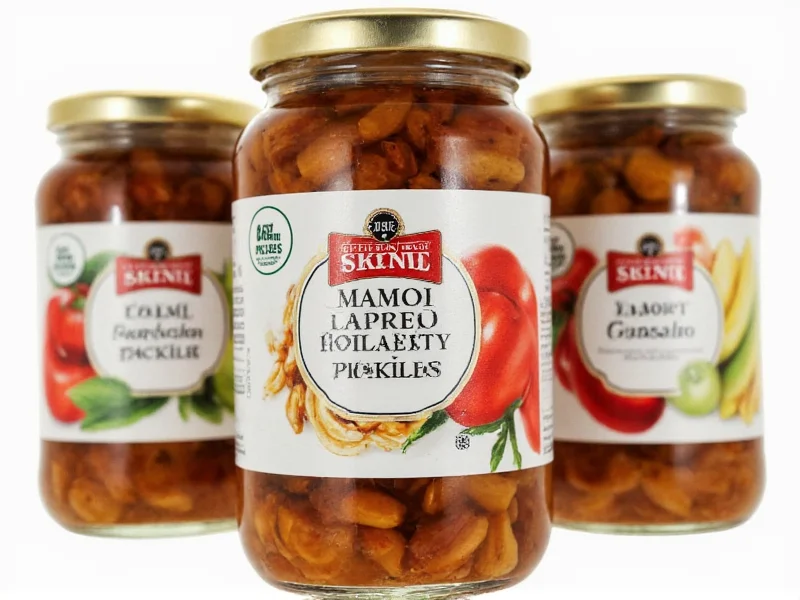These vibrant snacks combine the tangy crunch of pickled vegetables with the complex flavor profile of chamoy, creating a unique taste experience that balances sweet, sour, salty, and spicy elements. While cucumbers are the most traditional base, modern variations often include carrots, jicama, or even mangoes for added texture and flavor complexity.
Understanding Chamoy Sauce: The Heart of the Snack
Chamoy sauce forms the essential component that transforms ordinary pickles into chamoy pickles. This distinctive condiment originated in Mexico with influences from Chinese preserved fruits brought by immigrants. Traditional chamoy begins with ume plums (often mislabeled as apricots in some commercial products), which are preserved in a brine of salt, vinegar, and chili peppers.
The fermentation process creates the sauce's signature complex flavor profile. Authentic chamoy contains no artificial coloring, deriving its vibrant red hue naturally from the fruit and chili components. When selecting ingredients for homemade chamoy pickles, look for products with simple ingredients: fruit puree, chili powder, salt, and vinegar.
Traditional Preparation Methods
Making chamoy pickles at home requires attention to both the pickling process and proper chamoy application. The most authentic approach involves two distinct steps:
| Preparation Stage | Time Required | Key Components |
|---|---|---|
| Vegetable Pickling | 24-72 hours | Vinegar, water, salt, sugar, garlic, oregano |
| Chamoy Application | Immediate serving | Chamoy sauce, tajín seasoning, lime juice |
| Marinating (optional) | 2-4 hours | Chamoy mixture with additional spices |
Many street vendors in Mexico prepare chamoy pickles by first creating a vinegar-based pickle brine for cucumbers or other vegetables, then generously coating them with chamoy sauce and finishing with a sprinkle of tajín seasoning. The vegetables must be thoroughly dried before applying the chamoy to ensure proper adhesion of the sauce.
Cultural Significance and Regional Variations
Chamoy pickles represent a fascinating fusion of culinary traditions. While firmly established in Mexican street food culture, their origins trace back to Chinese immigrants who brought preserved ume plums to Mexico during the 19th century. Over time, local ingredients like chili peppers and lime transformed the recipe into something uniquely Mexican.
Regional variations exist throughout Mexico and the American Southwest:
- Mexico City: Features cucumber-based chamoy pickles with extra chili powder
- Border regions: Often include mango or watermelon as base ingredients
- California adaptations: May incorporate local fruits like peaches or plums
- Traditional street style: Served in plastic bags with a straw for the liquid
Flavor Profile and Serving Suggestions
The magic of chamoy pickles lies in their complex flavor balance. A single bite delivers multiple taste sensations in sequence: initial sweetness from the fruit base, followed by sour notes from the vinegar preservation, then saltiness from the brine, and finally the spicy kick from chili peppers.
For optimal enjoyment, serve chamoy pickles:
- Chilled but not ice-cold to preserve flavor complexity
- With fresh lime wedges to enhance the sour notes
- Alongside other Mexican street snacks like elote or esquites
- In small portions due to their intense flavor profile
Many enthusiasts enjoy chamoy pickles as a palate cleanser between courses or as a refreshing snack on warm days. The combination of vinegar and chili creates a thermoregulatory effect that can actually help cool the body in hot climates.
Storage and Shelf Life Considerations
Proper storage significantly impacts the quality and safety of homemade chamoy pickles. When prepared correctly with adequate vinegar concentration (minimum 5% acidity), refrigerated chamoy pickles maintain quality for 2-3 weeks. Commercial products with preservatives may last 6-12 months unopened.
Key storage guidelines:
- Always store in airtight containers to prevent flavor transfer
- Keep refrigerated at or below 40°F (4°C)
- Use clean utensils when serving to prevent contamination
- Discard if mold appears or vinegar smell turns unpleasant
Unlike traditional vinegar pickles, chamoy pickles have a shorter shelf life due to the additional fruit components in the sauce that can ferment further. The ideal consumption window is 3-7 days after preparation for peak flavor and texture.
Creating Authentic Chamoy Pickles at Home
For those interested in making traditional chamoy pickles, focus on quality ingredients rather than complicated techniques. Start with firm, fresh cucumbers (English cucumbers work well due to their thinner skin and fewer seeds). The pickling brine should maintain a precise vinegar-to-water ratio (typically 1:1) with adequate salt concentration (2-3% by weight).
When selecting chamoy sauce, check the ingredient list for artificial preservatives and colors. Authentic products list fruit puree as the first ingredient rather than corn syrup or artificial flavors. Some enthusiasts prefer making their own chamoy from dried plums, chili powder, and lime juice for complete ingredient control.











 浙公网安备
33010002000092号
浙公网安备
33010002000092号 浙B2-20120091-4
浙B2-20120091-4